11 Movies That Were Better Than the Book

Almost every reader, at least once, has said a version of “the book was better” when discussing a movie. It’s a cliché precisely because it’s difficult to outdo the magic of reading an author’s words and picturing the story in your mind. However, sometimes adaptations can give these books a new life by providing a new focus and perspective, or we watch the film so many times that by the time we get around to reading the source material, it disappoints. Additionally, the author can just adjust elements they weren’t quite satisfied with the first time when adapting for the screen. In each of these circumstances, we can come across the rare exception of when the movie is better than the book. These are some of those films.
One type of entry we are not going to include is novelizations or movies that came after the book. For example, Guillermo del Toro and Daniel Kraus’ The Shape of Water wouldn’t count. The book may be debatably better than the film, as it gives more perspective to two characters. However, the book wouldn’t exist without the film. The book also came out nearly six months later, too. While all art is political and doesn’t exist in a vacuum, reading is also a very personal experience. You won’t agree with all the entries, and I can tell you that neither did the Mary Sue writers who came together on this list.
Jurassic Park (1993)
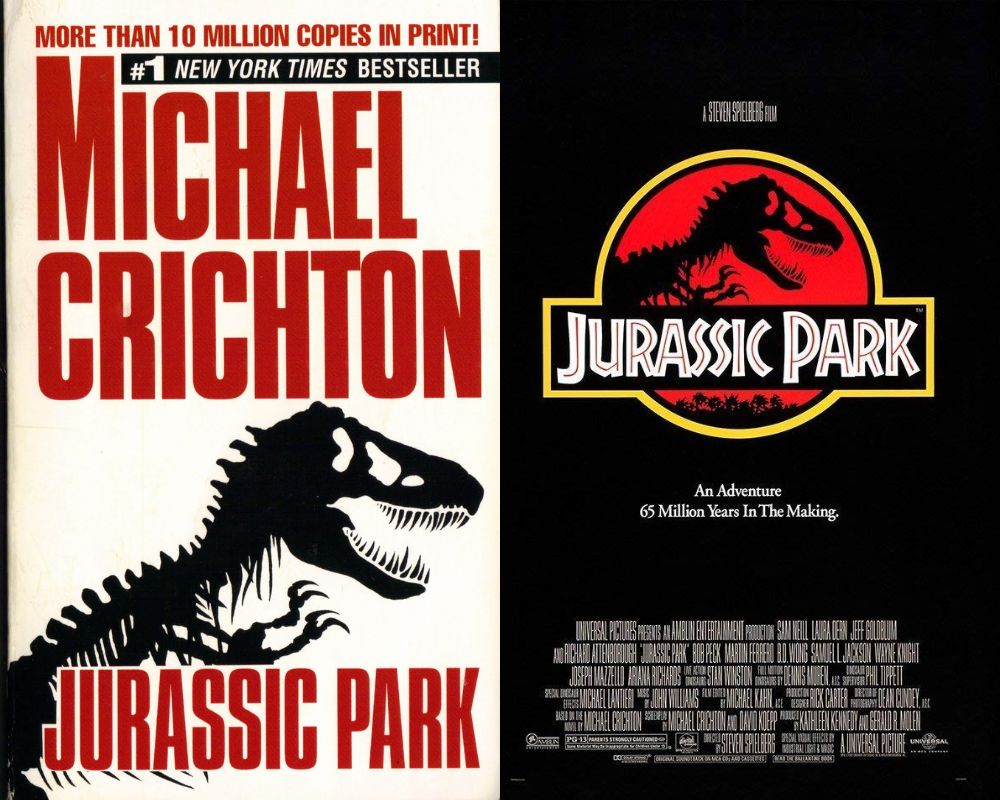
The Jurassic Park movie’s decision not to kill off Ian Malcom was literally retconned into the book sequel because it was so good. Dr. Ellie Sattler was also given a much more realistic outfit in the film compared to her book counterpart’s crop top and booty shorts, in addition to being upgraded from a grad student to a doctor in her own right. The kid characters were a bit more interesting in the film, as Book!Lex Murphy was a typical annoying younger sibling character, while her older brother Tim got all the fun stuff—not at all the case in the classic film.
While Spielberg arguably romanticizes John Hammond a little too much, I think Hammond being an idealist who leaps without thinking makes for an intriguing antagonist, especially considering real-world backlash against Silicon Valley tech magnates who refuse to listen to reason. -Kimberly Terasaki
Aquamarine (2006)

Alice Hoffman’s Aquamarine (one of two Water Tales) is a solid middle-grade mystery/fantasy novel. However, as a light-hearted, pre-teen fantasy, it is a different kind of awesome. The movie is more enjoyable to me for a number of personal reasons. Firstly, I’m a sucker for fish-out-of-water stories (pun intended). I had also seen the movie a bunch of times before ever reading the book. This was at the (first and highest) peak of Jojo’s fame.
The book holds its own sort of magic and is much more of a mystery. Because the quest and mystery of Aquamarine is central to the story, the tension from one of the girls moving isn’t as important. In the book, Claire is moving to Florida, but in the movie, it’s Hailey moving to Australia. This is because of her mom’s new marine biologist job. However, in the film, it feels more relatable because most kids have experienced that pain. The fear of growing apart and losing a friend just takes higher priority in the film. –Alyssa Shotwell
The Devil Wears Prada (2006)

While the original The Devil Wears Prada novel gave us the complicated characters of Miranda Priestly and Andrea Sachs, there’s no denying that the movie version completely outsold its counterpart. Debuting in 2006, the movie follows the book’s plot very closely as it tells the story of Andrea “Andy” Sachs, an aspiring journalist who scores the job “millions of girls would kill for” as the junior personal assistant to Miranda Priestly, the editor-in-chief of Runway magazine.
The movie follows Andy as she’s constantly verbally humiliated by Miranda and the other Runway staff members as she’s seen multiple times looking down her nose at those at the fashion magazine. Though Miranda is a harsh boss who demands her employees go above and beyond for her at all hours of the day, Andy learns to become a more confident version of herself and earns Miranda’s respect along the way.
The main reason the movie outsold the book is firmly because of the performances of Meryl Streep as Miranda and Anne Hathaway as Andy. Their interactions are much more engaging due to the actors’ chemistry, and Streep’s portrayal of Miranda has been cemented as one of the most iconic performances of all time. You can’t mention this movie without someone quoting one of her most famous lines, like, “Florals? For spring? Groundbreaking.”
We’re all incredibly grateful for the original novel because it gave us one of the best movies of the early ‘00s. -Kayla Harrington
Jaws (1975)
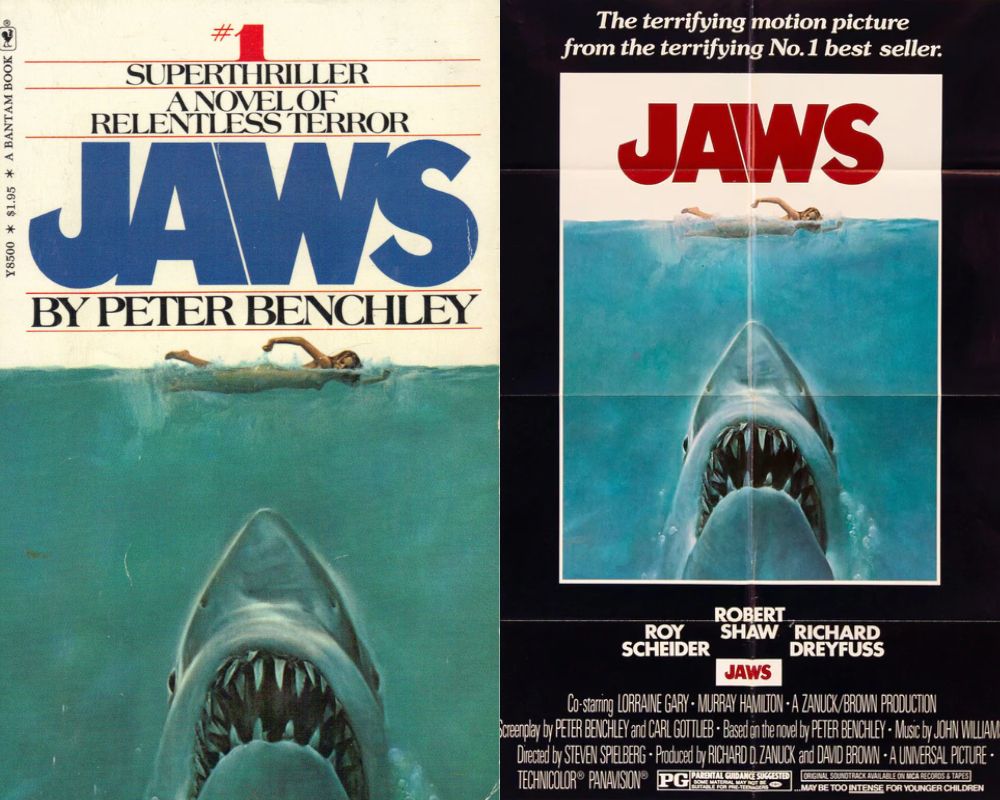
Jaws, directed by Steven Spielberg and starring Roy Scheider and Richard Dreyfuss, redefined the film industry by becoming the first recognizable summer blockbuster in June 1975. Simply put, Jaws is a perfect film: The plot is tight and compelling, the characters are magnetic, and the cinematography is beautiful to watch. There are almost too many unforgettable moments in Jaws to list.
The novel Jaws, though, hasn’t aged quite as well. Journalist Peter Benchley was commissioned by Doubleday to write a novel about shark attacks, and the resulting book was a bestseller. However, it got mixed reviews from critics, and the film stripped away the novel’s superfluous subplots to get at the, uh, meat of the story. –Julia Glassman
Hunger Games: Mockingjay Parts 1 and 2 (2014-2015)
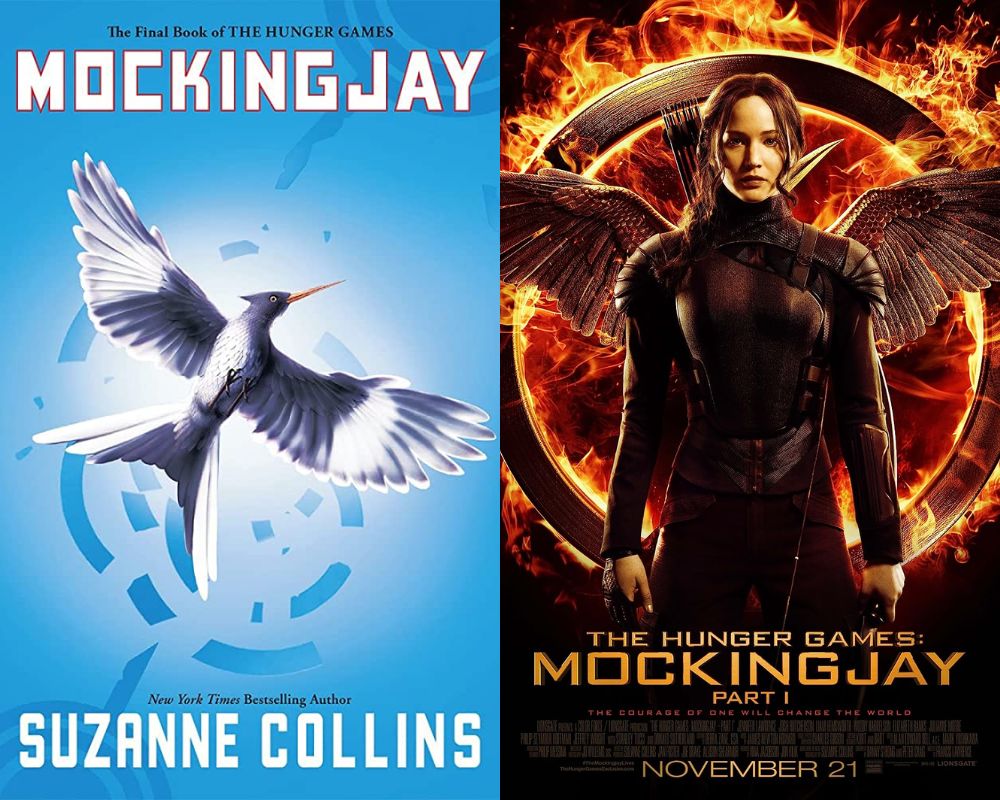
The Hunger Games: Mockingjay may be a controversial choice, especially when considering how neither the book nor movies were well-received at first, but I think having Effie Trinket present was a massive improvement in the movies, bringing in some much needed levity. The films do a better job at keeping us informed about the larger rebellion and the effects Katniss’ propaganda has overall.
I also think the framing of the final scene is interesting for how it reframes the ending of the book. It uses a lot of the same last words from Katniss, but where the book heavily emphasizes her trauma and PTSD, the movie manages to balance it with showing that Katniss has indeed finally found the peace and safety she’s been fighting for her whole life. -Kimberly Terasaki
BlacKkKlansman (2018)
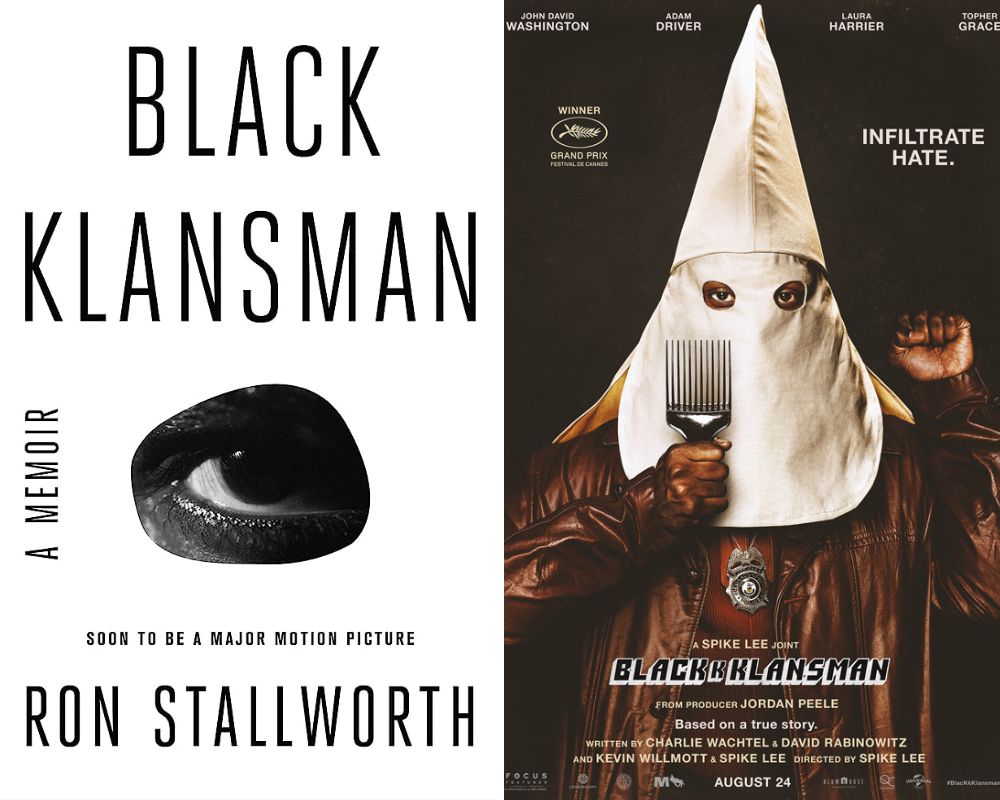
In talking about BlacKkKlansman, I’ve gotta start by saying that these are complicated works that ultimately serve as copaganda in different ways. However, as far as telling a story and the propaganda being less obvious, Spike Lee’s 2018 film is a much better experience.
Reading Ron Stallworth’s novel about his own police work is akin to reading a Dick Gregory book without the comedy—that is, a little conspiratorial, meandering, and uncle-coded, but coming from a good place. Still, reading a memoir that’s cohesive, from someone who is not a writer first, is an interesting experience. Since first reading it, I’ve learned that Stallworth was allegedly a part of COINTELPRO, which colors the story negatively.
Compared to the book, the film is pure high-budget entertainment. I mean that in the best (amazing cast and score) and worst (partial funding by the military/cops) ways. The basic synopsis of “Black cop infiltrates the KKK” is a real-life fact. However, almost everything else is misleading or an outright lie. This makes for a much more engaging story because so much more of it was made up.
I’m stressing it so much because it does this more than other stories. It should really be “inspired by true events” and not “based on true events.” I have a complicated soft spot for the movie, because it’s my first Spike Lee joint and a great, if unethical, adapted screenplay. Also, the music component sets a time-appropriate tone that is just not present in a reflective memoir. -Alyssa Shotwell
The Princess Diaries (2001)
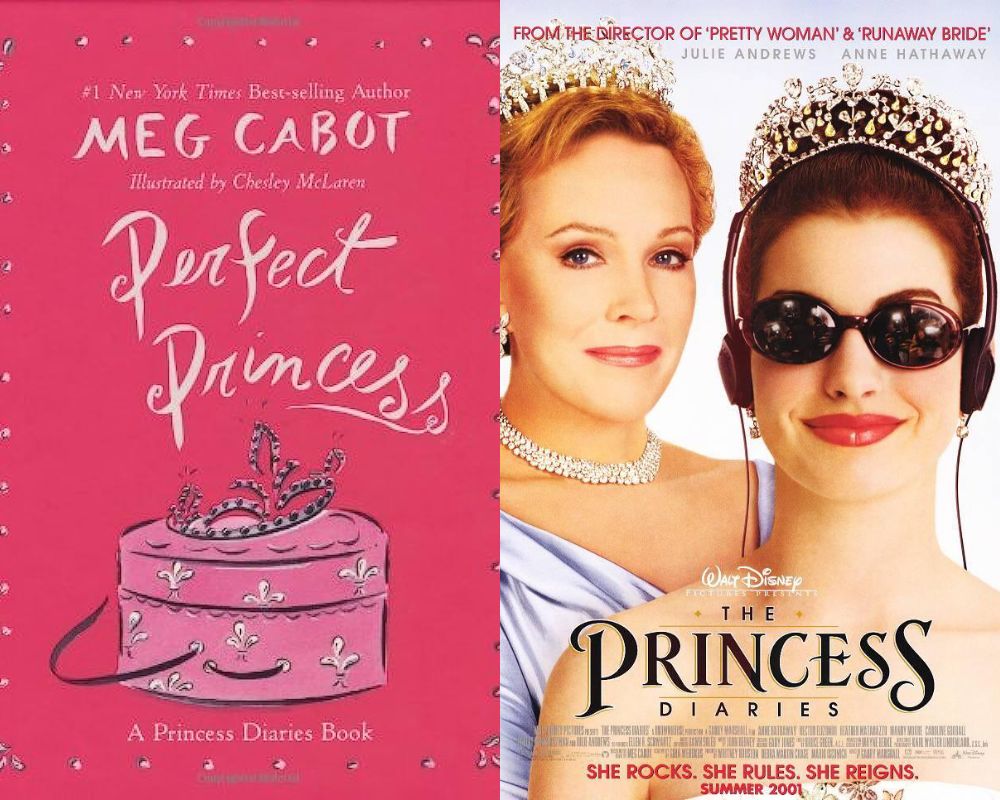
As a pre-teen, I read all of the classic teen girl books: Gossip Girl, The Clique, Pretty Little Liars, etc. However, there’s one book in particular that holds a super special place in my heart, and that’s The Princess Diaries.
Written by Meg Cabot in 2000, the book follows Mia Thermopolis as she goes from average teenager to princess overnight when she finds out her father was the prince of a small European country named Genovia. Cabot chronicled Mia’s journey of self-discovery of becoming princess, then queen, over 11 books.
However, the reason why this book in particular has stuck with me for so long is because it helped spawn two of my favorite movies of all time: The Princess Diaries and The Princess Diaries 2: Royal Engagement. The movies star Anne Hathaway (yes, this is another Hathaway entry on this list) as Mia and the incredible Julie Andrews as Mia’s grandmother, Queen Clarisse. Once again, Hathaway’s chemistry with her older costar creates some of the most iconic scenes of all time. Ask anyone you know whose seen this movie and they’ll pick a different scene as their favorite: the ice cream headache, Mandy Moore singing on the beach, the car driving downhill. The list goes on and on!
The small changes the movie makes really enhance certain aspects of the book. For example, in the book, Mia’s father is alive and the one who told she was a princess. In the movie, Clarisse tells Mia and her father is dead. While it’s a sadder change, it makes the bond between Mia, her mother, and Clarisse that much stronger. Plus, the sequel is absolutely fantastic, as it veers away from the events of the book series and allows Hathaway to continue to shine. -Kayla Harrington
Norwegian Wood (2010)
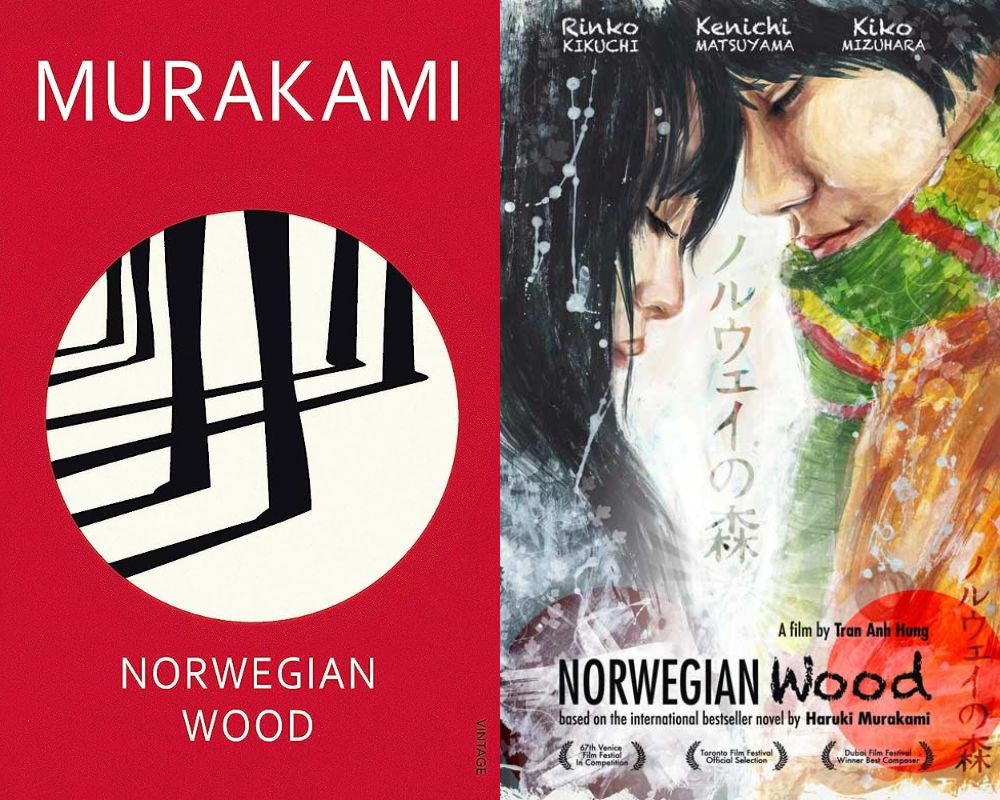
When I studied Asian History in college, nearly every one of my male peers loved Murakami. We would talk about his writing, and I’d have to smile and bite back my own commentary, because my own “Murakami phase” had long since come and gone. Once I grew out of my teens and started to more critically analyze the way he wrote women, I found it hard to read his novels, which was tough since I loved his writing so much as a teenager. In particular, I used to love Norwegian Wood, yet couldn’t even get through a re-read once I turned nineteen.
So, I was expecting the film to be equally hard to get through. Instead, I discovered one of my favorite films of my young adulthood.
The film removes Murakami’s leering gaze, which often reduces the story’s female characters to “irresistible” emblems of sexuality, usually within inappropriate, unsettling contexts. While none of the original characters are quite as fleshed out as in the novel, I find this to be a worthy sacrifice in favor of adding more humanity to them. The film is deeply introspective, almost painfully so, as it juxtaposes the complexities of each character’s life with the tumult of 1960s Japan. Norwegian Wood feels like a familiar, comforting, and ultimately cathartic dream—in no small part thanks to its score, gorgeously crafted by none other than Radiohead’s Jonny Greenwood. -Madeline Carpou
American Psycho (2000)

Book-to-movie adaptations aren’t easy, but the best among them has always been American Psycho, simply for the brilliance of taking something like Bret Easton Ellis’ book and turning it into the commentary that Mary Harron did. Ellis did not necessarily recognize what he had on his hands. A biting commentary on what the white men in charge can get away with and the structures they have to live in, it took Harron and Guinevere Turner (who co-wrote the screenplay together) to really nail the satire that Ellis tried to present to us.
Lost in Ellis’s own violent telling of Bateman’s actions, the book is often hard to read. It took me years, multiple rewatchings of the movie, and seeing the musical to finally finish Ellis’ book, only to discover that Harron and Turner nailed that same message in a more clear way that didn’t idolize its villain in the way that the book sometimes does. -Rachel Leishman
Stardust (2007)

Written by Neil Gaiman, and illustrated by Charles Vess, the novel Stardust isn’t bad by any means. It just falls slightly flat compared to the film, which is absolutely brimming with whimsy and charm.
Stardust remains one of my favorite films from my childhood, because it’s just so full of imagination and care for the world it’s portraying. With Charlie Cox, Claire Danes, Michelle Pfeiffer, and Robert De Niro helming a phenomenal cast, there isn’t a moment in this film that isn’t fun, colorful, and utterly engrossing. Even now, I still feel a sense of giddiness whenever I watch this movie, purely because it’s such a delightful adventure to follow.
By comparison, the novel, while gripping in its own right, simply isn’t as fun, and yes, that might be a fairly simple and uninspired take, especially when considering Gaiman tried to model Tolkien in style when writing Stardust. I suppose I’m just of the opinion that fantasy doesn’t always have to be dry and a little grim in order to be “good.” In fact, sometimes fantasy works best when it leans into just how fantastical it can be. -Madeline Carpou
The Lord of the Rings (2001–2003)

Okay, hold on, put down your torches and pitchforks and listen to me for a second. Just wait one second and listen!
The three books in The Lord of the Rings trilogy by J.R.R. Tolkien are masterpieces. Tolkien arguably defined the genre of high fantasy, creating a richly textured world of elves, hobbits, orcs, wizards, and more. The Shire, the Elvish language, the eye of Sauron, and the One Ring are nothing short of cultural touchstones.
And Peter Jackson’s film adaptations just … trim some of the gristle, that’s all. I’m sorry if I’m pissing off any hardcore Tom Bombadil stans out there, but the films are just as expansive and sumptuous as the novels, with a story that’s more streamlined and engrossing. Jackson couldn’t have done it without Tolkien, but you have to admit that Jackson did it very, very well. –Julia Glassman
—
What movie did you like more than the book or source material? Let us know in the comments!
This piece was written during the 2023 WGA and SAG-AFTRA strikes. Without the labor of the writers and actors currently on strike, the work being covered here wouldn’t exist.
(featured image: 20th Century Fox/New Line Cinema/Universal Pictures/Toho)
Have a tip we should know? [email protected]





